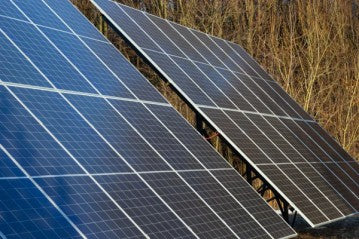
As the demand for renewable energy continues to grow, solar power has emerged as a leading source of clean and sustainable electricity. Solar battery storage systems have become an integral part of harnessing the full potential of solar energy. They allow homeowners and businesses to store excess solar power for later use, ensuring a continuous and reliable energy supply even during periods of low sunlight or grid outages. However, choosing the right solar battery storage size can be a daunting task. In this article, we will guide you through the process of determining the optimal solar battery storage size for your needs.
I. Assess Your Energy Consumption Patterns
To accurately determine the appropriate solar battery storage size, it's crucial to assess your energy consumption patterns. By analyzing your historical energy bills, you can identify the average amount of electricity you consume on a daily, weekly, and monthly basis. This information will serve as a baseline to estimate the capacity your solar battery storage system needs to meet your energy needs.
It's essential to consider seasonal variations in energy consumption. For example, if you rely heavily on air conditioning during the summer, your energy usage may increase. Conversely, if you use more heating during the winter months, your energy consumption may also fluctuate. Understanding these patterns will help you determine the size of your solar battery storage system to ensure it can accommodate your peak energy demands.
II. Evaluate Solar Generation Capacity
The solar generation capacity of your photovoltaic (PV) system plays a crucial role in determining the optimal battery storage size. Assessing the potential of your solar panels to generate electricity will provide insights into the surplus energy that can be stored for later use.
Start by examining your solar panel specifications, including their rated capacity in kilowatts (kW). Consider factors such as the panel's orientation, tilt angle, shading, and local weather conditions, as these elements can impact the overall solar generation capacity. It's worth consulting a professional solar installer or using solar modeling software to accurately estimate the potential energy output of your PV system.
III. Define Your Energy Independence Goals
Determining your energy independence goals is another critical factor when deciding on the size of your solar battery storage system. Energy independence refers to the degree to which your property can rely on solar energy, reducing dependence on the grid and potentially minimizing energy costs.
To define your energy independence goals, consider the following questions:
1. Do you want to reduce your reliance on the grid during peak periods or power outages, or do you aim for complete off-grid living?
2. Are you looking to offset a specific percentage of your electricity bills, or do you want to achieve net-zero energy consumption?
3. Do you anticipate expanding your solar PV system in the future, requiring additional battery storage capacity?
By clarifying your energy independence goals, you can align your solar battery storage size with your desired level of self-sufficiency.
Conclusion
Determining the appropriate size for your solar battery storage system is crucial to ensure optimal performance, efficiency, and cost-effectiveness. By assessing your energy consumption patterns, evaluating solar generation capacity, and defining your energy independence goals, you can make an informed decision that meets your specific requirements.
Remember, investing in a solar battery storage system is a long-term commitment. As technology advances and your energy needs evolve, it's advisable to consult with solar professionals who can provide expert guidance and help you select the most suitable solar battery storage size for your home or business. With the right system in place, you can maximize the benefits of solar energy, reduce your carbon footprint, and enjoy a reliable and sustainable power supply for years to come.

0 comments